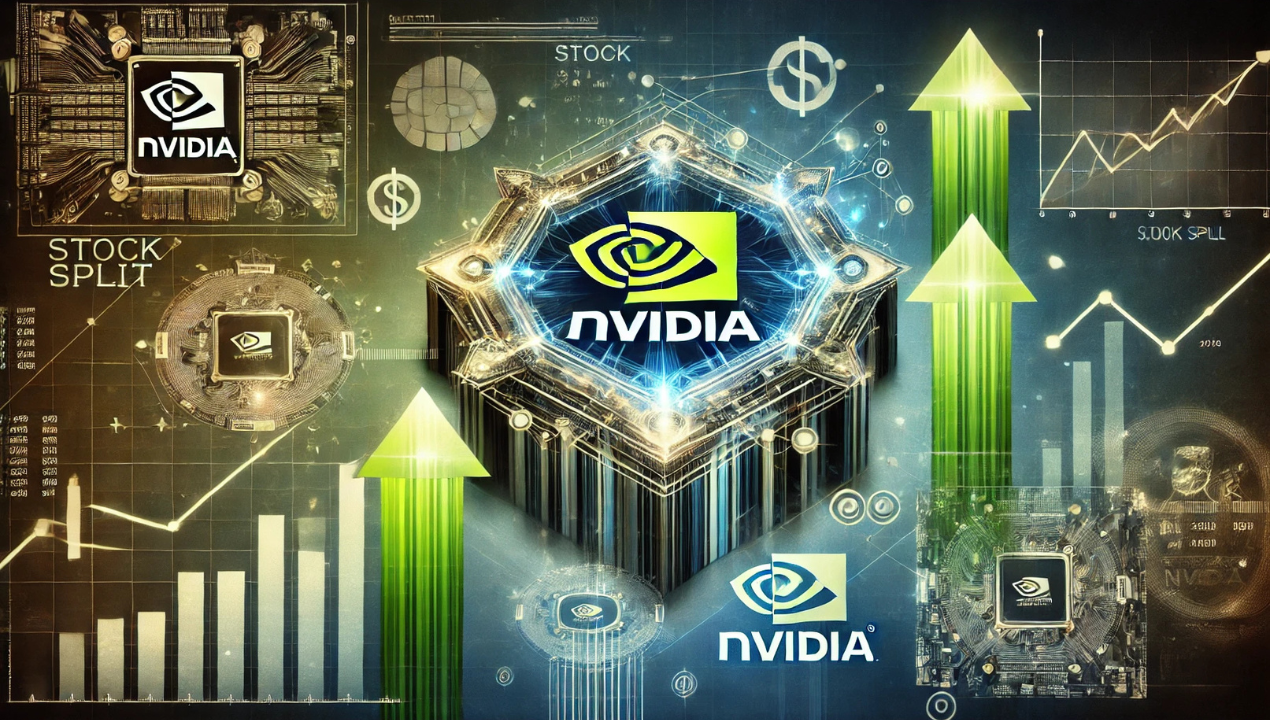Nvidia, one of the leading companies in the tech industry, has gained widespread attention in recent years for its groundbreaking products and financial decisions. One of the most talked-about moves by the company is its stock split. nvidia stock split Stock splits, while not uncommon in the world of investing, often raise questions about what they mean for both the company and its shareholders. This article will explore Nvidia’s stock split in-depth, discussing its significance, its implications for investors, and why it matters in the broader context of the stock market.
What is a Stock Split?
A stock split is a corporate action in which a company increases the number of its outstanding shares by issuing more to current shareholders. The company may do this to reduce the market price of its shares, making them more affordable for a broader range of investors. While the company’s value remains unchanged immediately after the stock split, the price per share decreases proportionally, which means shareholders have more shares at a lower cost.
There are two main types of stock splits: forward and reverse. A forward stock split is the most common, where a company issues additional shares to current shareholders. For example, in a 2-for-1 stock split, an investor who holds one share will receive an extra share, doubling their holdings but halving the stock price. A reverse stock split, on the other hand, consolidates shares to increase the stock price, usually seen in companies attempting to boost their stock price to avoid delisting from exchanges.
Stock splits do not affect the overall value of an investment, but they can impact the liquidity and market perception of a company’s stock. Investors should understand that stock splits are cosmetic; they do not directly affect the company’s earnings or long-term prospects.
Nvidia’s Stock Split History

Nvidia has a notable history of stock splits, with the company utilizing this strategy to make its shares more accessible to investors. Nvidia’s first stock split occurred in 2000, just a few years after the company’s initial public offering (IPO). Since then, Nvidia has carried out multiple stock splits, the most recent in July 2021. The 4-for-1 split was a significant event, particularly for individual investors who might have found Nvidia’s stock price too high to buy in bulk.
The company’s decision to split its stock has often come at times of strong performance and market optimism. For instance, the 2021 stock split came when Nvidia’s stock surged to record highs, reflecting the growing demand for its chips, particularly in gaming, artificial intelligence, and data center technologies. High stock prices can make shares less attractive to smaller investors, so a split can effectively make the stock more affordable and encourage broader market participation.
Historically, stock splits by Nvidia have been seen as positive indicators. After each split, the company’s shares often experience a boost due to the lower share price and the overall investor confidence generated by the company’s continued growth. Stock splits provide liquidity and can shape market perception and investor sentiment, ultimately influencing the stock’s future performance.
How the Nvidia Stock Split Affects Investors
A stock split means investors will hold more shares, but each share will be worth less. The key takeaway is that the total value of their investment doesn’t change immediately. Let’s consider the impact of Nvidia’s 4-for-1 stock split in 2021. If you held one share of Nvidia priced at $1,000 before the split, after the split, you would have four shares, each priced at $250. In this example, your total investment value remains the same while the stock price drops.
While this sounds simple, there are other factors to consider. For one, stock splits can increase the liquidity of a stock, making it easier for investors to buy and sell. With more shares available at a lower price, individual investors who were previously priced out of the stock may now be able to enter the market. This often leads to increased trading activity, which can be beneficial for the stock’s performance in the short term.
For long-term investors, stock splits can also have psychological effects. As the stock price becomes more affordable, it may encourage more retail investors to buy into the stock, which can create upward momentum. However, it’s important to note that a stock split should not indicate that the company is in better financial health. It’s simply a strategy to make shares more accessible and increase investor participation.
Moreover, investors should be aware of the potential tax implications and brokerage-related fees associated with stock splits, although these are typically minimal. Checking with a financial advisor or tax professional is essential to ensure you’re fully informed about the economic aspects of owning shares after a stock split.
What Does Nvidia’s Stock Split Mean for the Market?
Nvidia’s stock splits have significant implications for the broader market, particularly for the tech sector. Nvidia is a key player in the technology industry, providing graphics processing units (GPUs) that power everything from gaming consoles to AI-driven data centers. Because of its prominence in the tech world, any corporate action by Nvidia, including stock splits, can have ripple effects throughout the market.
In the wake of Nvidia’s stock split in 2021, many analysts and investors expected increased attention on Nvidia’s stock, which could result in more capital inflows. The lower price per share makes the stock more attractive to retail and institutional investors, thus boosting demand. This, in turn, can drive the stock’s price up, creating a positive feedback loop where its increased demand drives up its value.
Furthermore, Nvidia’s stock split reflects a broader trend among tech companies to engage in stock splits to make their shares more accessible. With tech stocks becoming more expensive due to high growth potential, companies like Nvidia are using stock splits to encourage more participation from smaller investors. This also helps maintain market liquidity and can attract new investors who may have been hesitant to invest in high-priced stocks.
Nvidia’s stock split may signal strength and stability for competitors in the market. The move suggests that Nvidia is in a good financial position to share its success with shareholders, which could force other companies to reconsider their strategies regarding stock prices and splits. This competitive pressure can drive innovation and more shareholder-friendly actions across the industry.
Conclusion
In conclusion, Nvidia’s stock split is more than just a cosmetic change in its share structure. It is a strategic move designed to increase accessibility for investors, boost liquidity, and maintain market interest in the company’s stock. While the split does not alter the company’s overall value, it can have significant short-term effects on stock performance, investor behavior, and broader market sentiment.
Nvidia’s history of stock splits has shown that the company is committed to rewarding its investors and ensuring its stock remains attractive in a highly competitive market. For those considering investing in Nvidia or any company that announces a stock split, it’s essential to understand the implications and view the move in terms of long-term growth and overall financial health.
By understanding stock splits, investors can make more informed decisions and take advantage of the opportunities when a company takes this step. As Nvidia continues to innovate and grow in the tech sector, its stock splits will likely remain an essential part of its investor relations strategy.
FAQs
What exactly happens to my Nvidia shares after a stock split?
After a stock split, you will receive additional shares in proportion to your current holdings, but the price per share will be adjusted accordingly. The total value of your holdings remains unchanged immediately after the split.
Does Nvidia’s stock split mean the company is doing well financially?
While a stock split can reflect positive market sentiment and a strong performance, it doesn’t necessarily indicate that the company’s financial situation has improved. It’s primarily a tool to make shares more accessible to investors.
How can a stock split affect my investment portfolio?
A stock split can increase the number of shares you hold without affecting the overall value of your investment. It can also affect the liquidity of your holdings, making it easier to buy and sell shares.
Is Nvidia’s stock split a good opportunity for new investors?
A stock split can make Nvidia’s shares more affordable, which may appeal to new investors. However, assessing the company’s fundamentals and growth prospects is essential before making investment decisions.
Should I sell my Nvidia shares before or after the stock split?
The decision to sell shares should be based on your investment strategy and financial goals. A stock split does not alter the company’s fundamental value, so it may not directly affect your decision to sell or hold.




